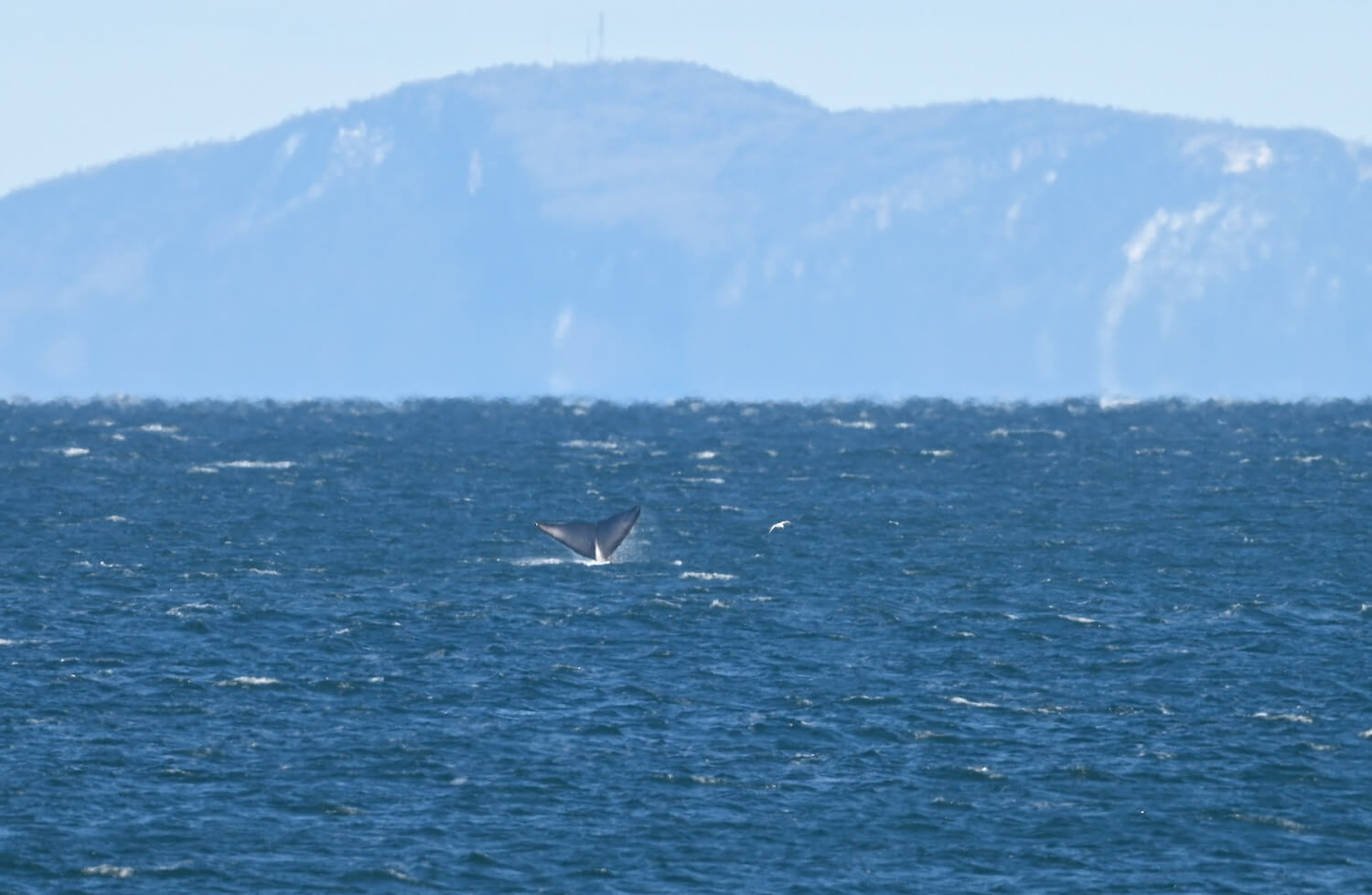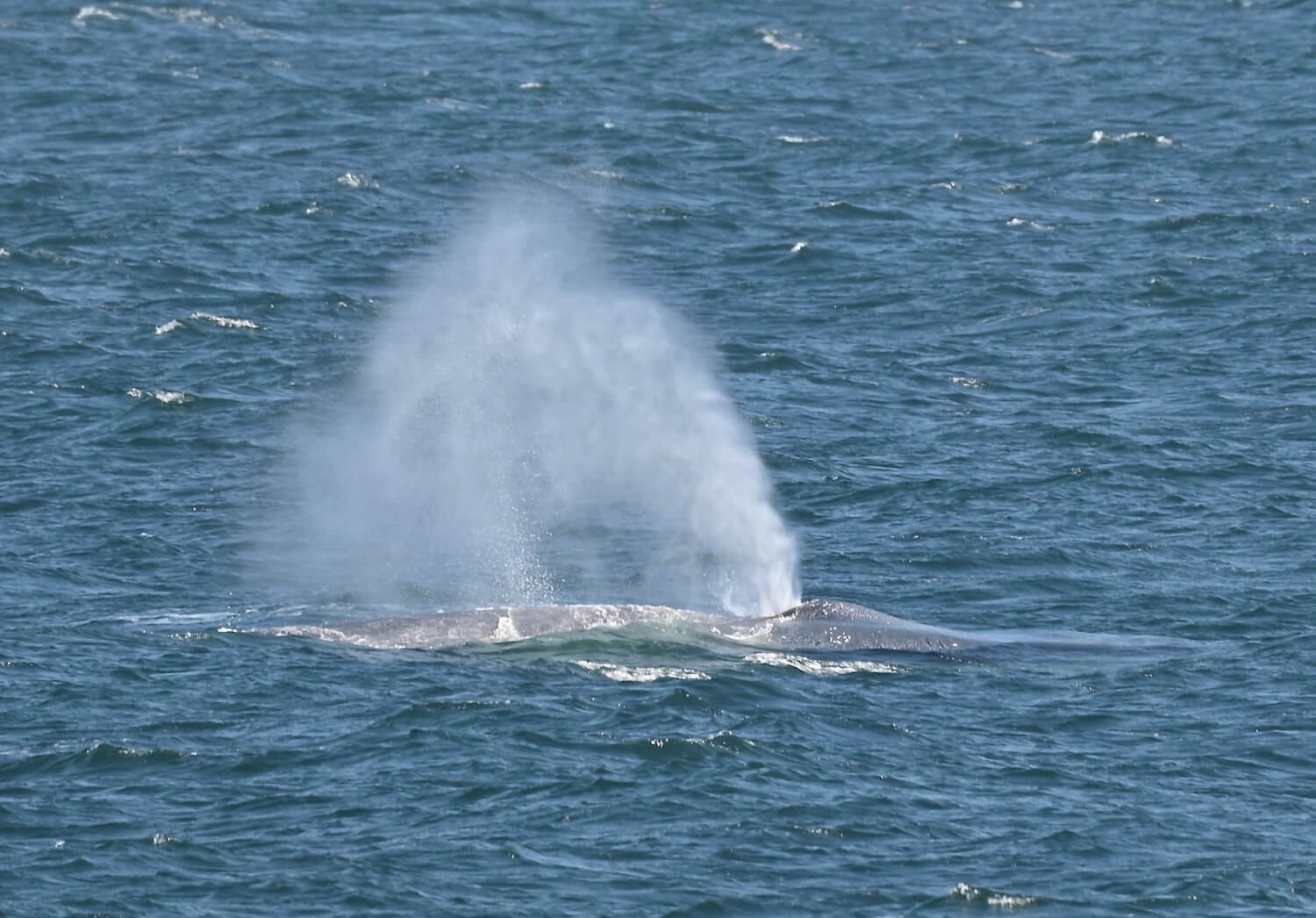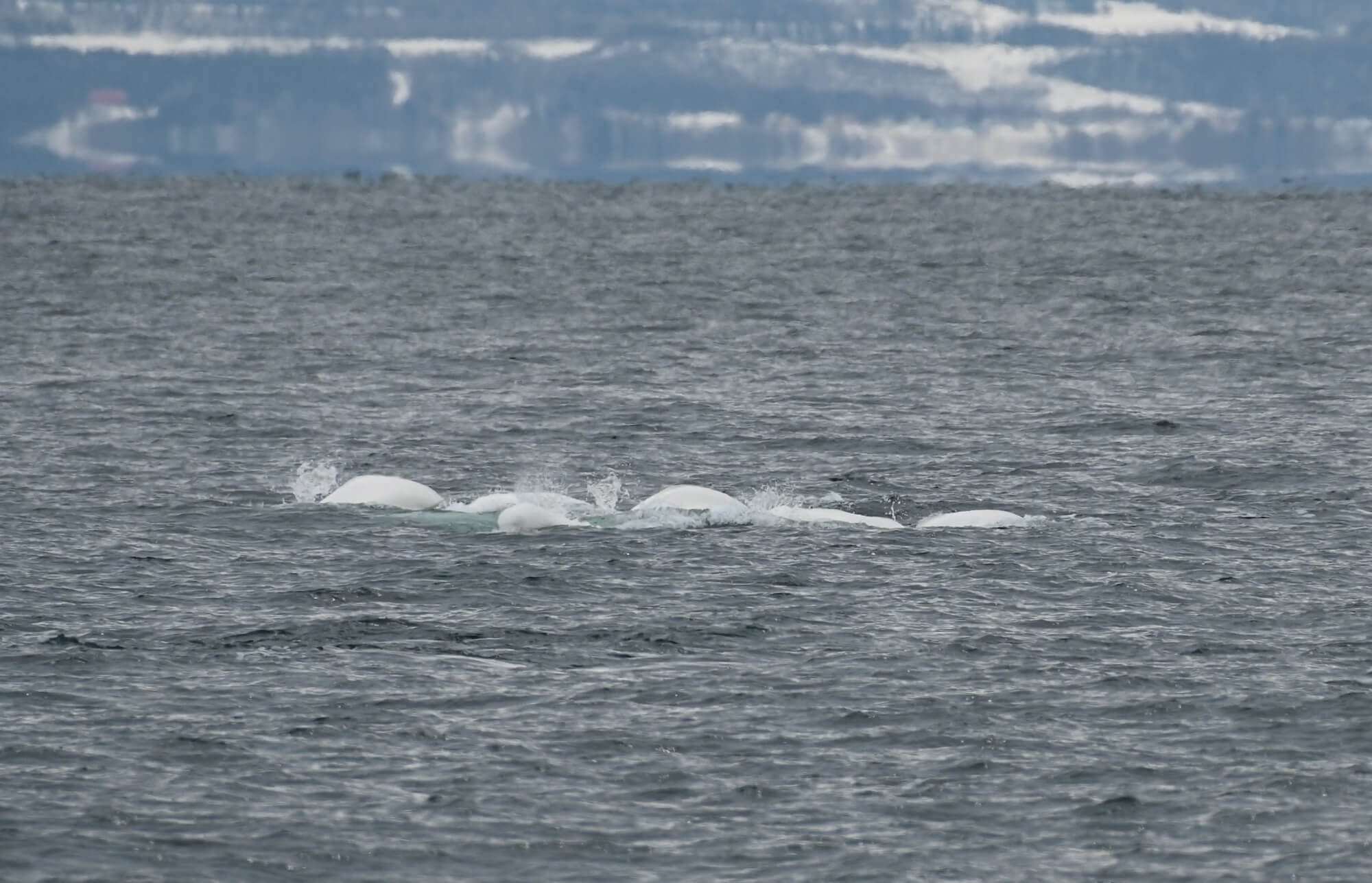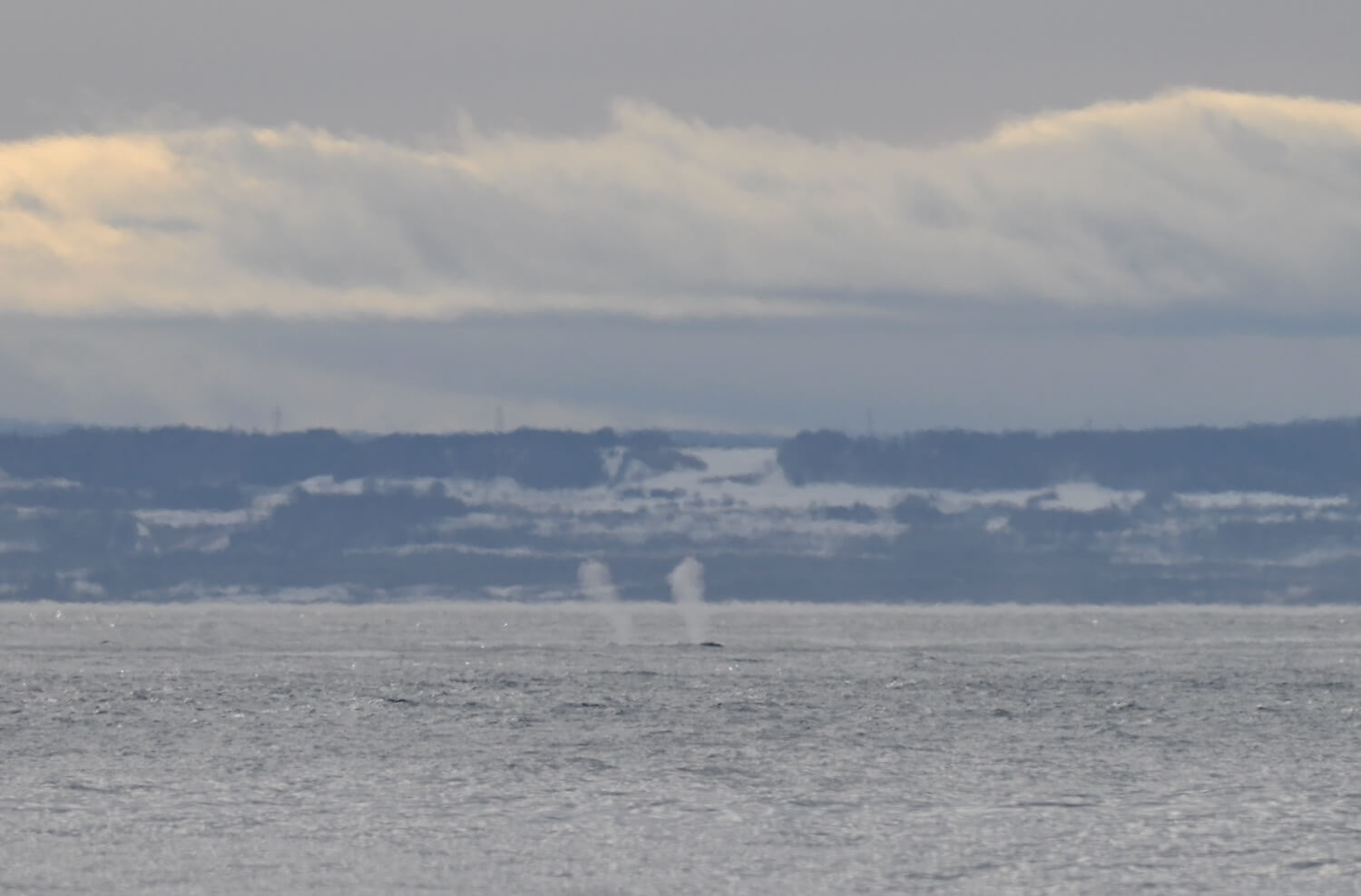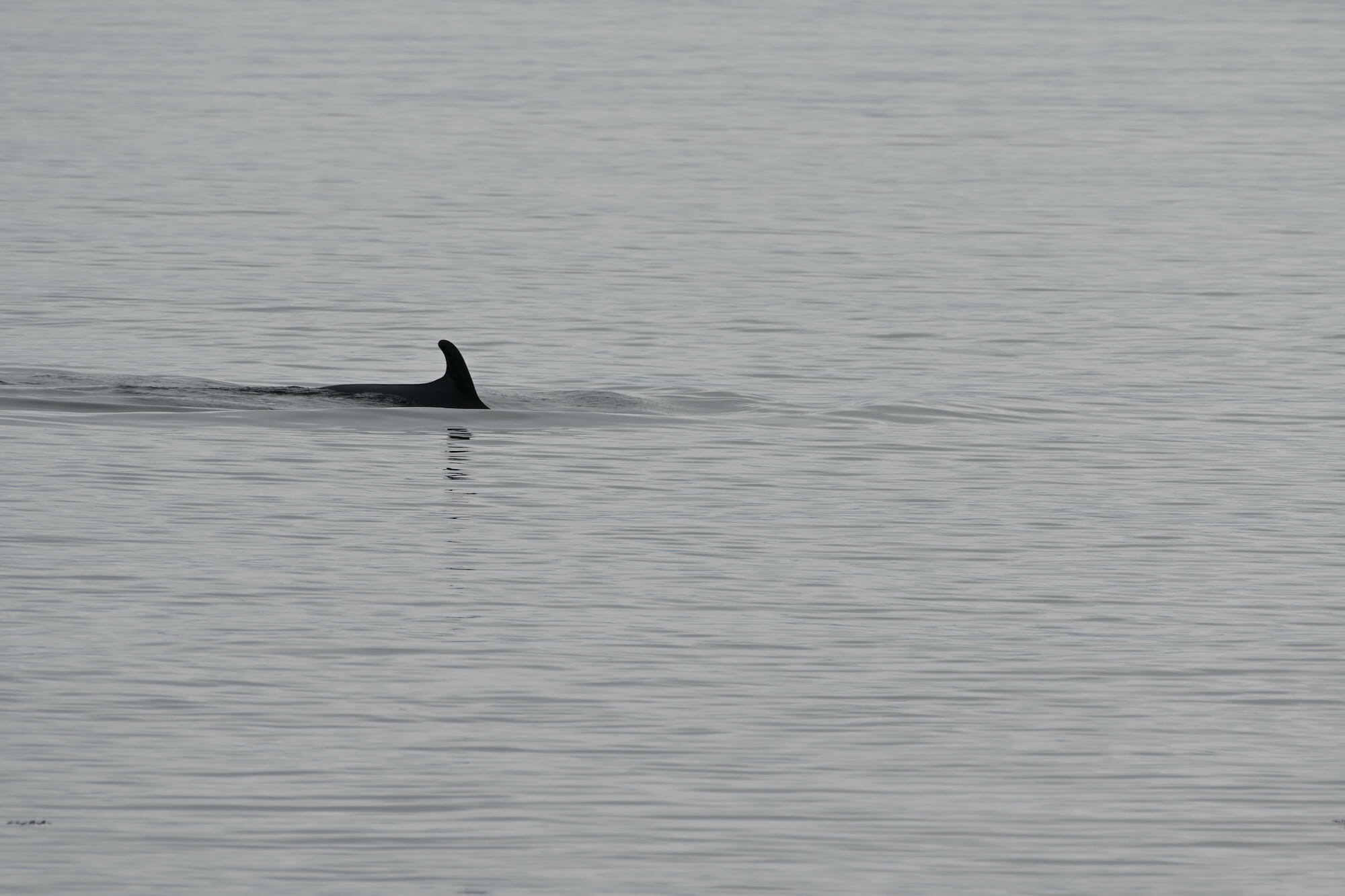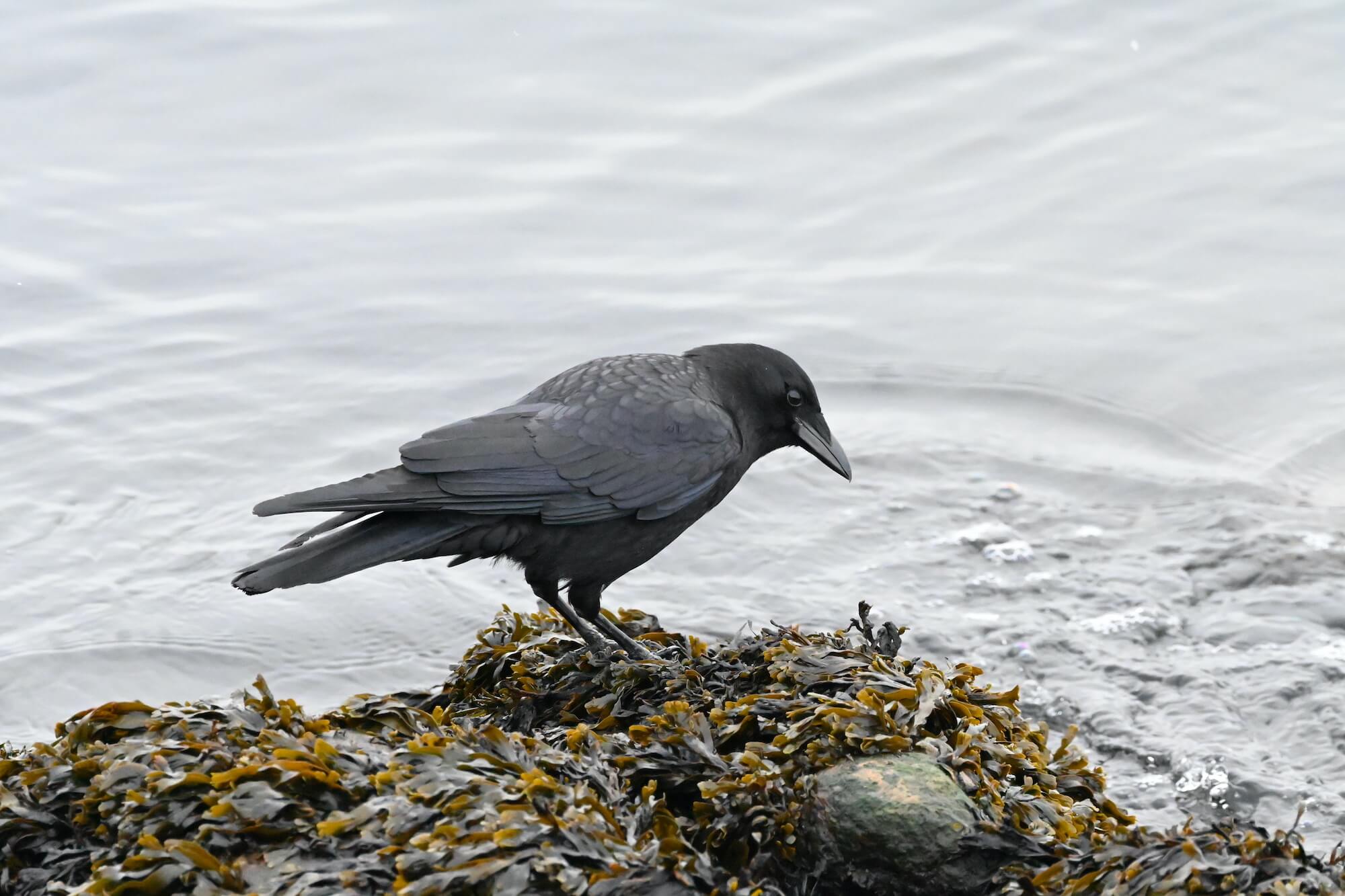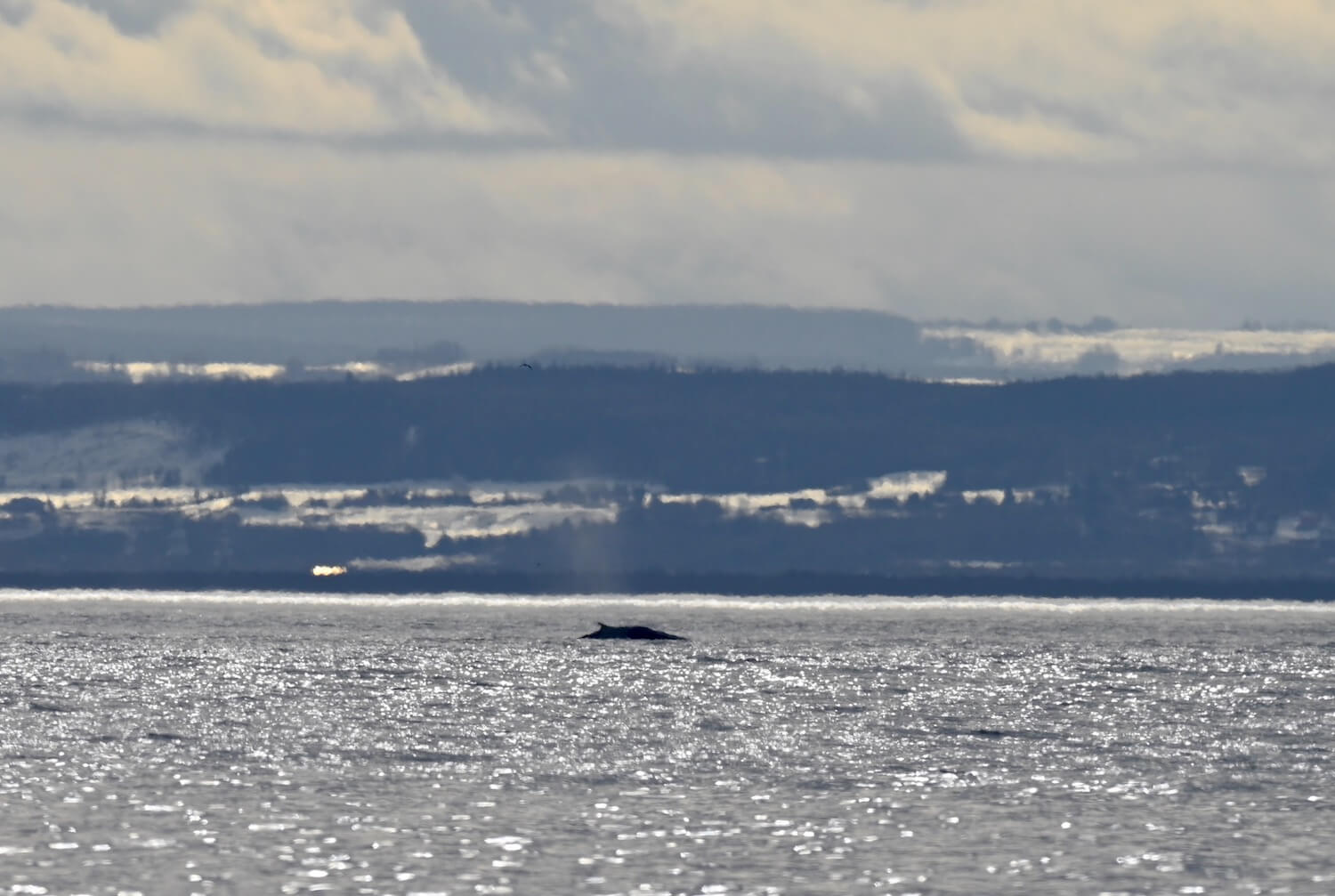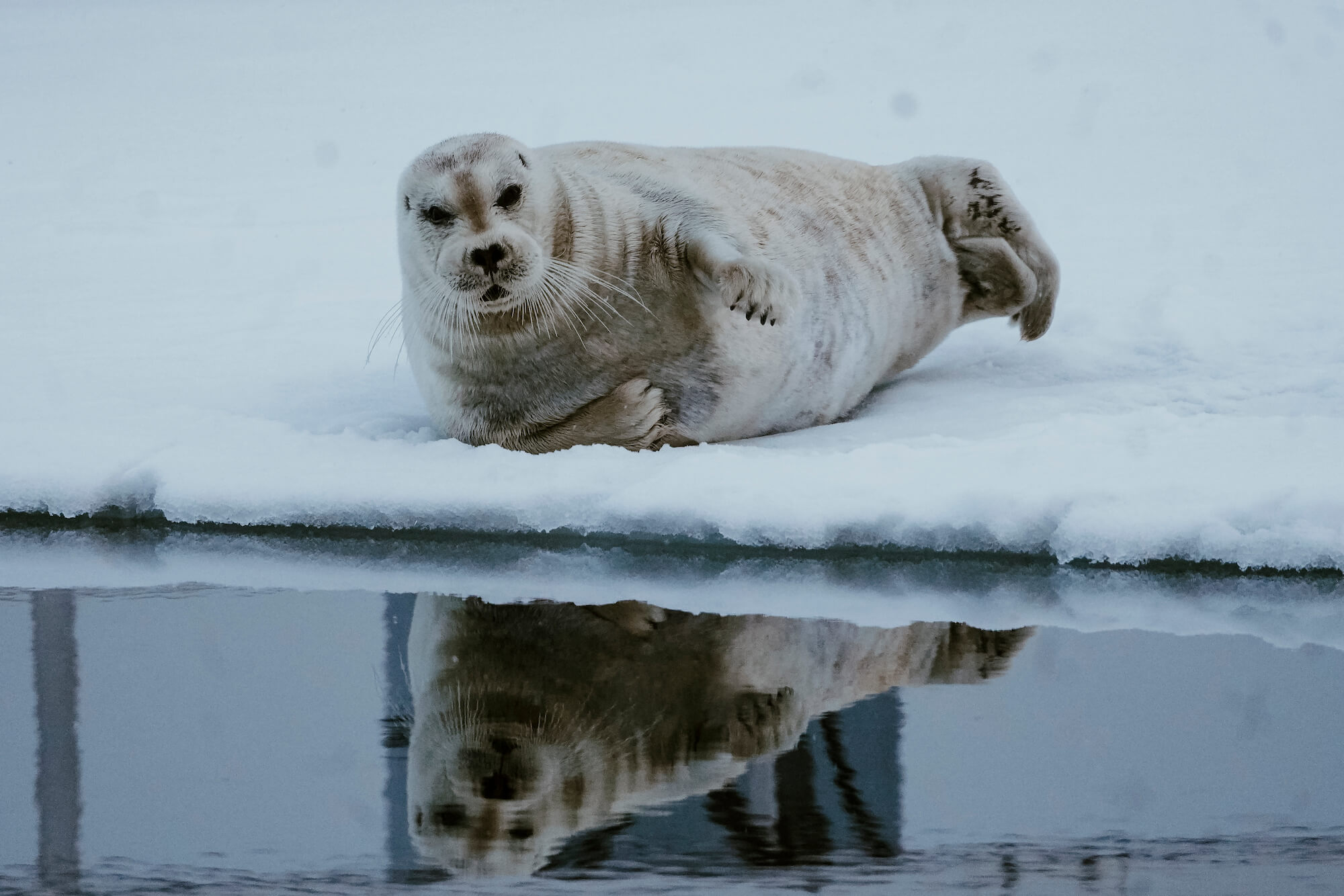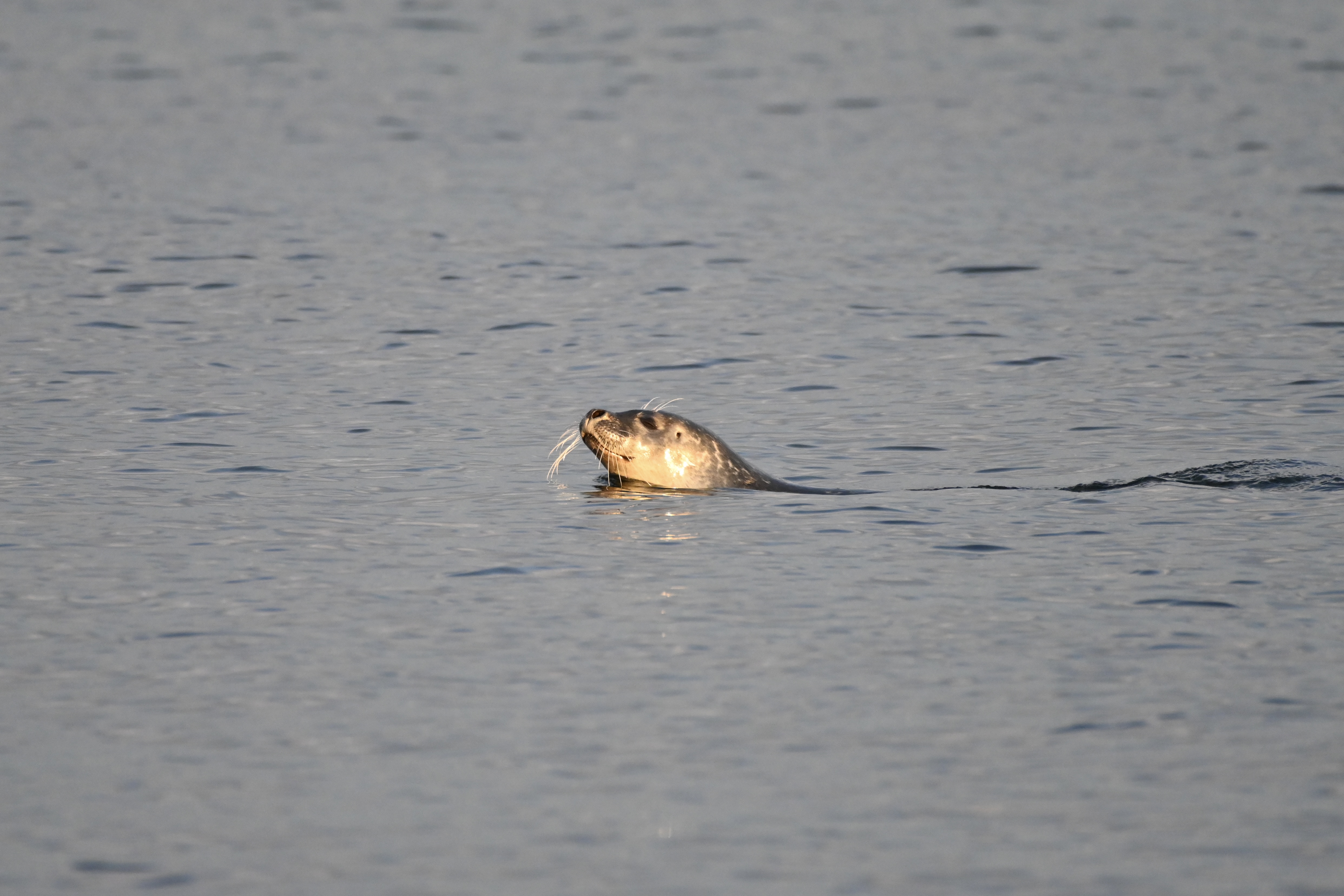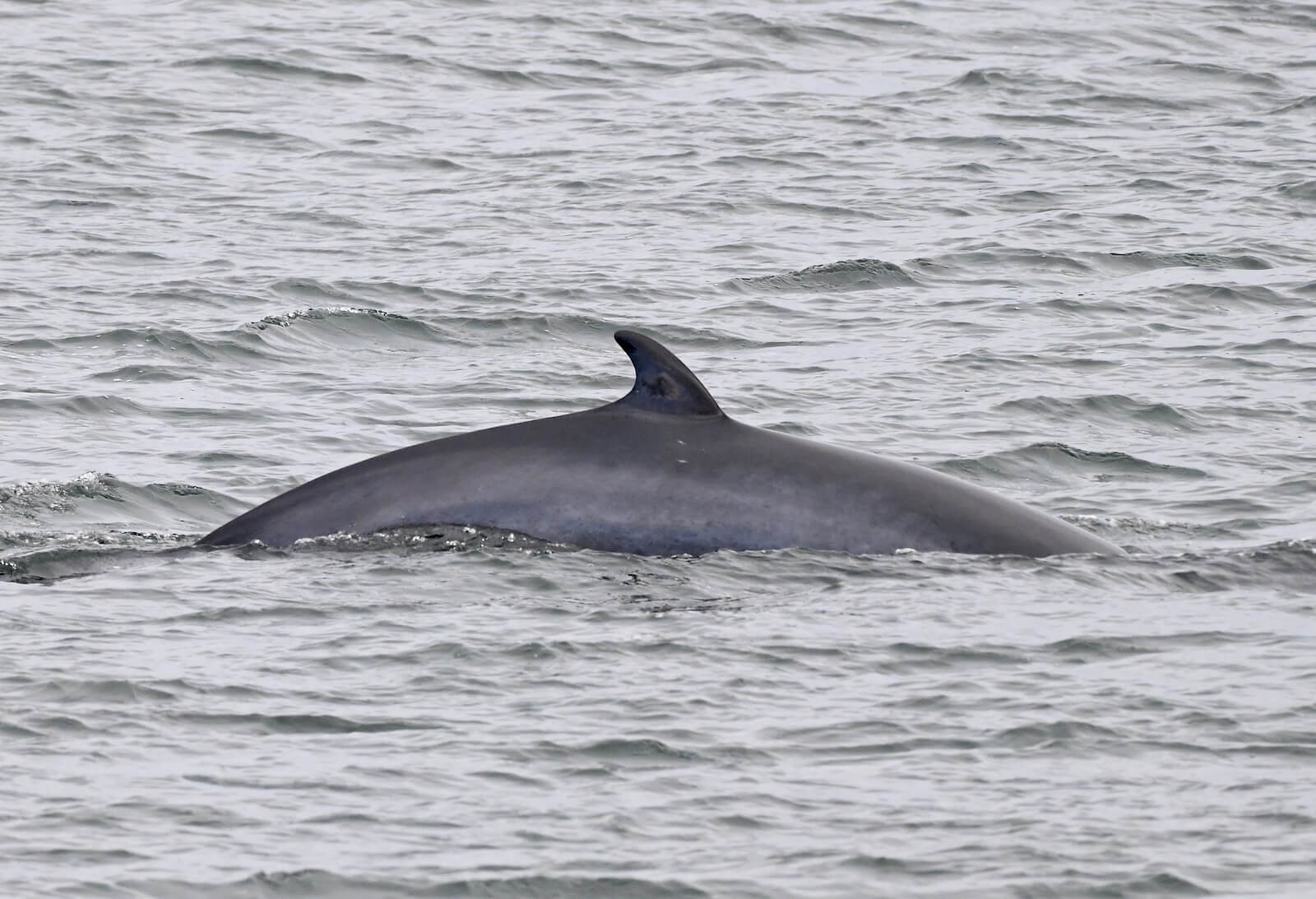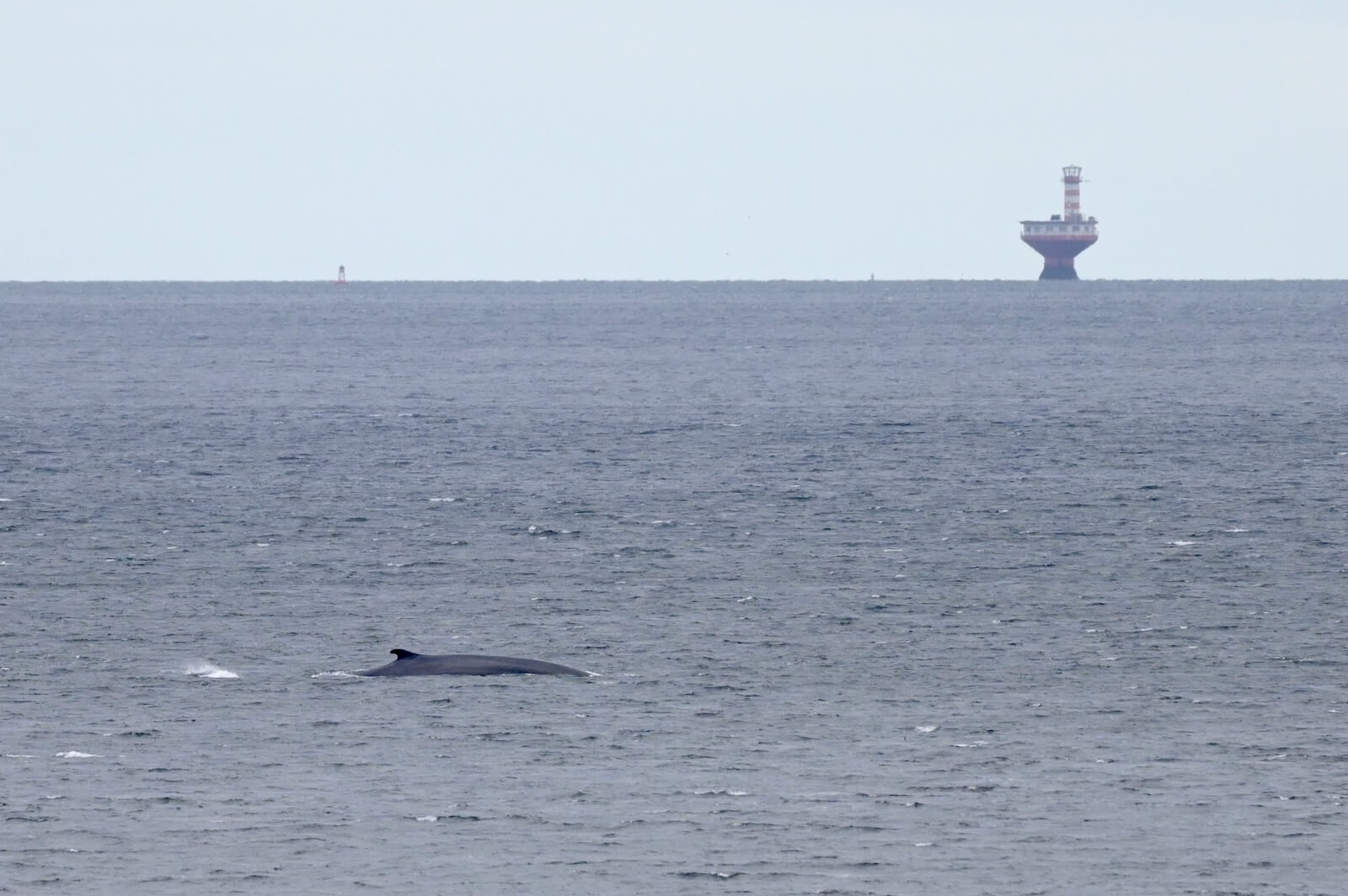The return of the minke whales in all their glory, the splendour of six blue whales and two fin whales near Les Escoumins, a noteworthy humpback passing through the Mont-Saint-Pierre area… There’s been plenty of action this week in the St. Lawrence! Belugas are increasingly standing out from the dwindling ice cover near the shorelines, while a bearded seal settled in for the week in Havre-Saint-Pierre.
Whales, whales everywhere!
“I was lucky enough to see two blue whales over the weekend,” commented one observer based in Les Escoumins. “On Thursday evening, right after work, I went to the pilots’ wharf hoping to see something, and I saw a large blue whale blow several times.” Needless to say, my day ended on a high note! Her weekend was also marked by the presence of marine mammals. On Sunday, an individual showed its tail when it dived. “It was really far offshore, but with my binoculars I was still able to see it quite well. Oh, and in addition to all that, I also observed several belugas and a seal.” A small group of harp seals was spotted swimming peacefully near Tadoussac.
Blue whales are the stars of the Côte-Nord. Near Les Escoumins, no fewer than six individuals were spotted, while two were reported in Franquelin. “It’s always nice to see belugas again with the arrival of spring, and seeing the big blues is the cherry on the sundae,” explains a naturalist. He is also delighted by the return of the smallest of the rorquals: “Plus, the most unpredictable whale has just ‘set fin’ in the Marine Park, the minke whale. I can’t wait to see them perform their feeding moves again.” A minke whale was also seen near Franquelin. Minke whale migrations are not well understood, but the first individuals are generally seen as early as March. Through acoustic recordings, scientists have determined that minke whales head toward the Caribbean in winter, but without congregating.
The naturalist was also surprised by the behaviour of a crow eating a mussel on the beach. As an opportunistic species, the crow adapts its diet to its environment. Near the coast, it doesn’t hesitate to prey on crustaceans, molluscs, and other invertebrates.
From the road, one woman was lucky enough to encounter a cetacean: “Yesterday I had a humpback in the Mont-Saint-Pierre area on my drive from Rimouski to Gaspé. A beautiful spout and back not too far from shore.”
Bearded seal
The residents of Havre-Saint-Pierre were treated to a visit from a pinniped straight from the north. With a small head, a stocky body weighing between 200 and 430 kilos, and bushy whiskers, it’s a bearded seal!
While they do occasionally turn up in the Gulf of St. Lawrence, this is an arctic species. With its thick layer of fat, this denizen of the frigid seas is well adapted to extreme temperatures. Its long whiskers are highly useful for detecting prey such as shrimp, clams, small fish, and squid. A solitary animal, the bearded seal is also known for its song, which can be heard from over 20 km away!
Thanks to all our collaborators!
Special thanks go out to all our observers who share their love for marine mammals with us! Your encounters with cetaceans and pinnipeds are always a pleasure to read and discover.
On the water or from shore, it is your eyes that give life to this column.
Odélie Brouillette
Thalia Cohen-Bacry
Patrice Corbeil
Laetitia Desbordes
Amber Gibson
Diane Ostiguy
Renaud Pintiaux
Pascal Pitre
Guillaume Savard
Andréanne Sylvain
Marielle Vanasse
J. Varin
And to all the others!
Additionally, we would like to acknowledge the following teams that also share their sightings:
Sept-Îles Research and Education Centre (CERSI)
Group for Research and Education on Marine Mammals (GREMM)
Marine Mammal Observation Network (MMON)
Quebec Marine Mammal Emergency Response Network (QMMERN)
Mingan Island Cetacean Study (MICS)
Would you also like to share your observations?
Have you seen any marine mammals in the St. Lawrence? Whether it’s a spout offshore or just a couple of seals, drop us a line and send your photos to [email protected]!


